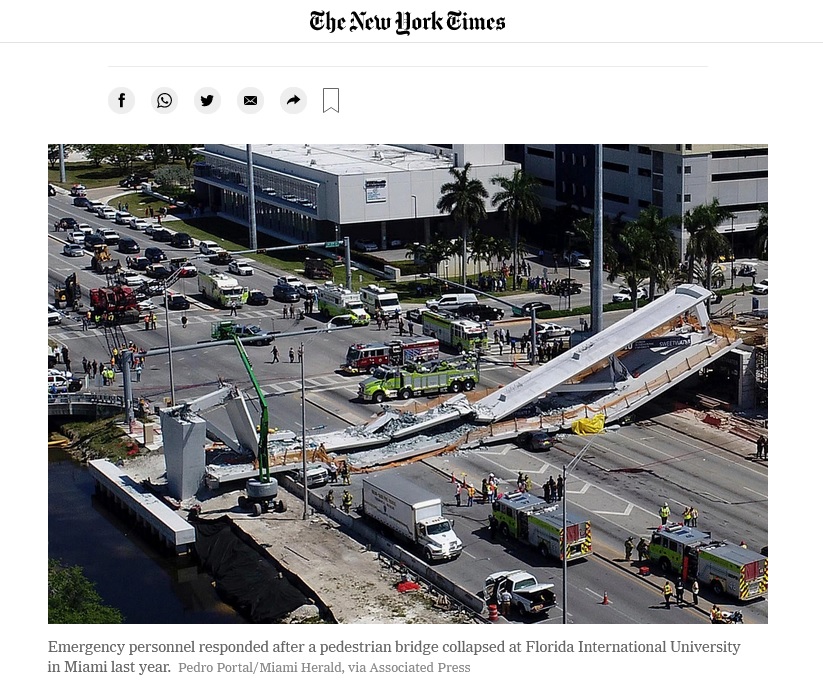PROJECT
Understanding the Collapse of a Bridge
Introduction
The Florida International University (FIU) pedestrian bridge had been designed to connect the FIU campus to student housing area in Sweetwater city in Miami-Dade County, Florida, USA. With a cost of more than $9 million to be constructed, the bridge was supposed to provide pedestrian safety, withstand severe hurricanes, and last more than 100 years. However, non of these aims were achieved because the main concrete span of the bridge collapsed onto the underneath road on March 15, 2018. The disaster occurred five days after the installation of the 53-long span (Fig. 1). The span weighed 9320kN (950 tons of mass) and its collapse (Fig. 2) resulted in 6 deaths and 10 injuries.


You can watch the following video for a brief story
Structural cause of the disaster
The structure of the span was in the form of a planar truss; meaning that all the weight of the span and future pedestrian weigh load would be transferred to the joints and resisted by the truss members. The collapse initiated by failure of one of the truss member during a construction process called post-tension rod adjustment. The question is why the failure of a single truss member led to the collapse of the whole truss. You will investigate the collapse and find the answer to this question through the following steps of this project.
Consider a simplified model of the truss of the bridge span as shown in Fig. 3. The demonstrated loads at the joints are due to the weight of the span (the load are approximate and for the purpose of this project).

1- What kind of truss is it? Locate the rigid triangular units of the truss.
2- Calculate the forces in members AG, GH, AH, and AB; determine which of the members are in compression or in tension. Explore the order of the magnitudes of the forces and compare them with the external loads on the truss.
3- The collapse of the truss initiated by the failure of member AH . It means member AH was removed suddenly. Redraw the truss without this member and locate the rigid triangular units again. Can you observe what goes wrong with this truss after removing member AH?
4- What would happen if any other single member had failed instead of member AH ? (hint: consider rigid triangular units)
5- A design of a truss is called non-redundant if the failure of a single member would cause the collapse of the whole truss. Was the design of the truss non-redundant? (refer to your answer for question 4).
6- Do you think adding extra members to the truss could remove the non-redundancy from the design? Sketch one possible design.